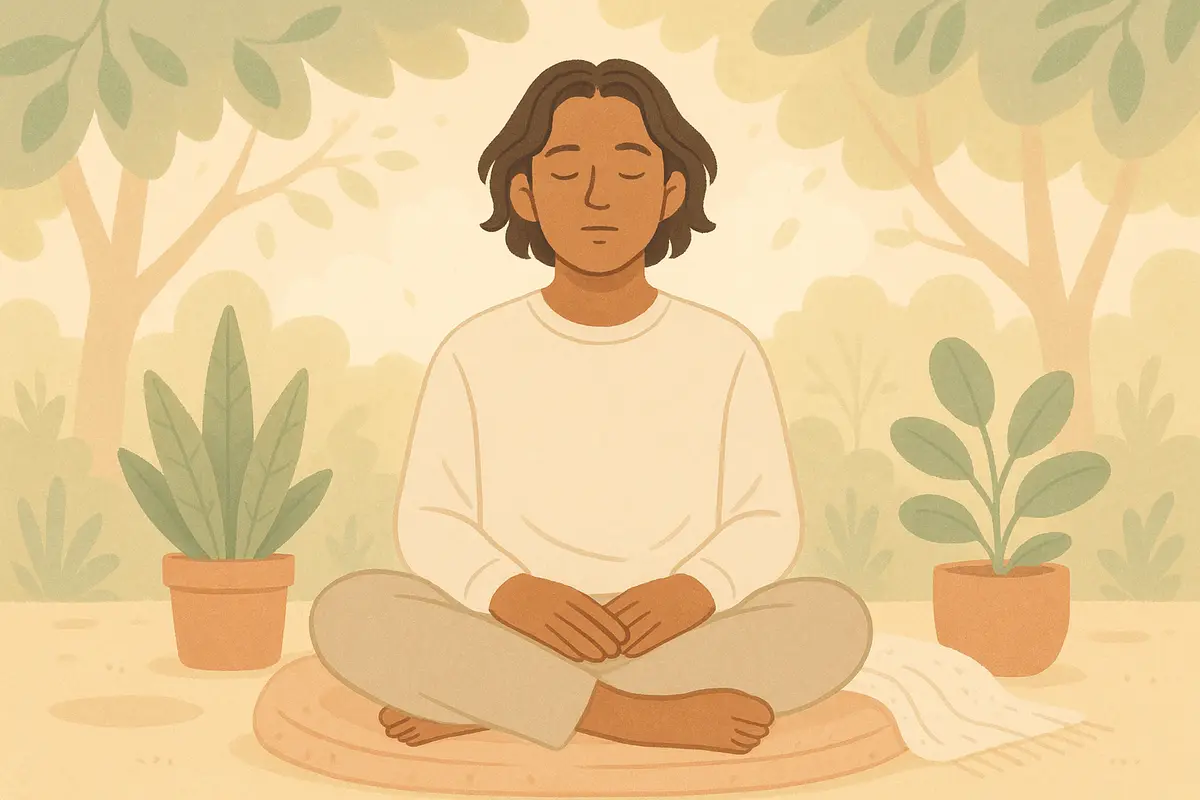The "I am safe in this moment" mantra provides rapid emotional grounding during panic, trauma responses, or intense anxiety by anchoring attention in present-moment safety through mindful repetition within 1-3 minutes of practice.

Overwhelmed by panic attacks that make you feel like danger is imminent even when you're physically secure, trapped in trauma responses that hijack your sense of reality, or consumed by anxiety that creates false urgency about imagined threats? This evidence-based approach harnesses the power of present-moment awareness to interrupt your nervous system's false alarm responses and restore accurate perception of your actual safety.
The "I am safe in this moment" mantra is a targeted grounding affirmation that rapidly redirects attention from perceived threats to present-moment reality, activating your body's natural calming mechanisms while building resilience against future anxiety episodes. This simple yet scientifically-backed practice provides immediate relief during emotional crises while strengthening long-term emotional regulation through repetitive neural pathway reinforcement.
Research demonstrates that mantra-based interventions combined with present-moment awareness significantly reduce anxiety symptoms, panic frequency, and trauma-related distress by engaging the parasympathetic nervous system's relaxation response.
The "I am safe in this moment" mantra operates through multiple evidence-based neurobiological and psychological mechanisms that directly counteract anxiety and trauma responses. The fundamental effectiveness stems from vagus nerve activation - the repetitive, rhythmic nature of mantra recitation stimulates the vagus nerve, which signals the parasympathetic nervous system to initiate the body's relaxation response.
The practice works through present-moment awareness principles that redirect attention from anxious future-focused thoughts or trauma-related past experiences to immediate sensory reality. This attentional shift interrupts the rumination and catastrophic thinking cycles that maintain anxiety and panic responses.
One critical mechanism is the activation of prefrontal cortex regulation over amygdala reactivity. The conscious repetition of safety-focused language engages higher-order brain regions responsible for executive control, helping to override the amygdala's automatic threat detection and fear responses.
The mantra leverages cognitive restructuring principles by replacing catastrophic thoughts with reality-based statements. Instead of anxiety-driven thoughts like "something terrible is happening," the mantra provides factual, present-moment assessment of actual safety conditions.
From a trauma-informed perspective, the technique supports "window of tolerance" regulation - helping individuals stay within the optimal zone of arousal where they can think clearly and function effectively rather than becoming overwhelmed by hyperarousal or numbed by hypoarousal.
The practice also works through interoceptive awareness - developing conscious connection to internal bodily sensations. By combining mantra repetition with breathing and sensory awareness, individuals rebuild trust in their body's signals and develop more accurate assessment of actual versus perceived threats.
Additionally, the technique engages neuroplasticity mechanisms through repetitive practice. Each time the mantra successfully calms anxiety or panic, it strengthens neural pathways associated with self-soothing and emotional regulation, making these responses more automatic over time.
The mantra also activates what researchers call "self-compassion" by providing gentle, caring self-talk during moments of distress. This compassionate inner dialogue counteracts the harsh self-criticism that often accompanies anxiety and trauma responses.
From a polyvagal theory perspective, the rhythmic, soothing nature of mantra repetition helps shift the nervous system from sympathetic activation (fight-or-flight) or dorsal vagal shutdown (freeze/collapse) into ventral vagal activation (social engagement and calm alertness).
"The mantra feels false or I don't believe I'm actually safe" - This is common, especially for trauma survivors or during intense anxiety. Focus on the objective truth of your immediate physical safety rather than general life safety. Even if you don't fully believe it initially, continue practice as belief often follows behavior change.
"I can't focus on the mantra because my thoughts are too overwhelming" - Start with shorter sessions (30-60 seconds) and combine with stronger sensory grounding like holding ice, naming objects you can see, or physical movement. Build concentration gradually rather than expecting immediate focus during high anxiety.
"The mantra makes me feel worse or more anxious" - This can happen if the technique activates awareness of how unsafe you typically feel. Go slower, use gentler language like "I'm working on feeling safer," or consider professional support if trauma responses are being triggered.
"I forget to use the mantra when I actually need it" - Set phone reminders for typical anxiety times, practice during mild stress to build habits, or ask trusted people to remind you about your grounding techniques during difficult moments when memory is compromised.
"I feel silly or self-conscious repeating the phrase" - This resistance is normal and often decreases with practice. Remember that self-soothing is a legitimate and important life skill. You can also practice silently or modify the language to feel more natural for your communication style.
"My anxiety is too severe for this technique alone" - The mantra is a valuable tool but may not be sufficient for severe anxiety disorders, PTSD, or complex trauma. Use it as part of comprehensive treatment that may include therapy, medication, or other professional interventions.